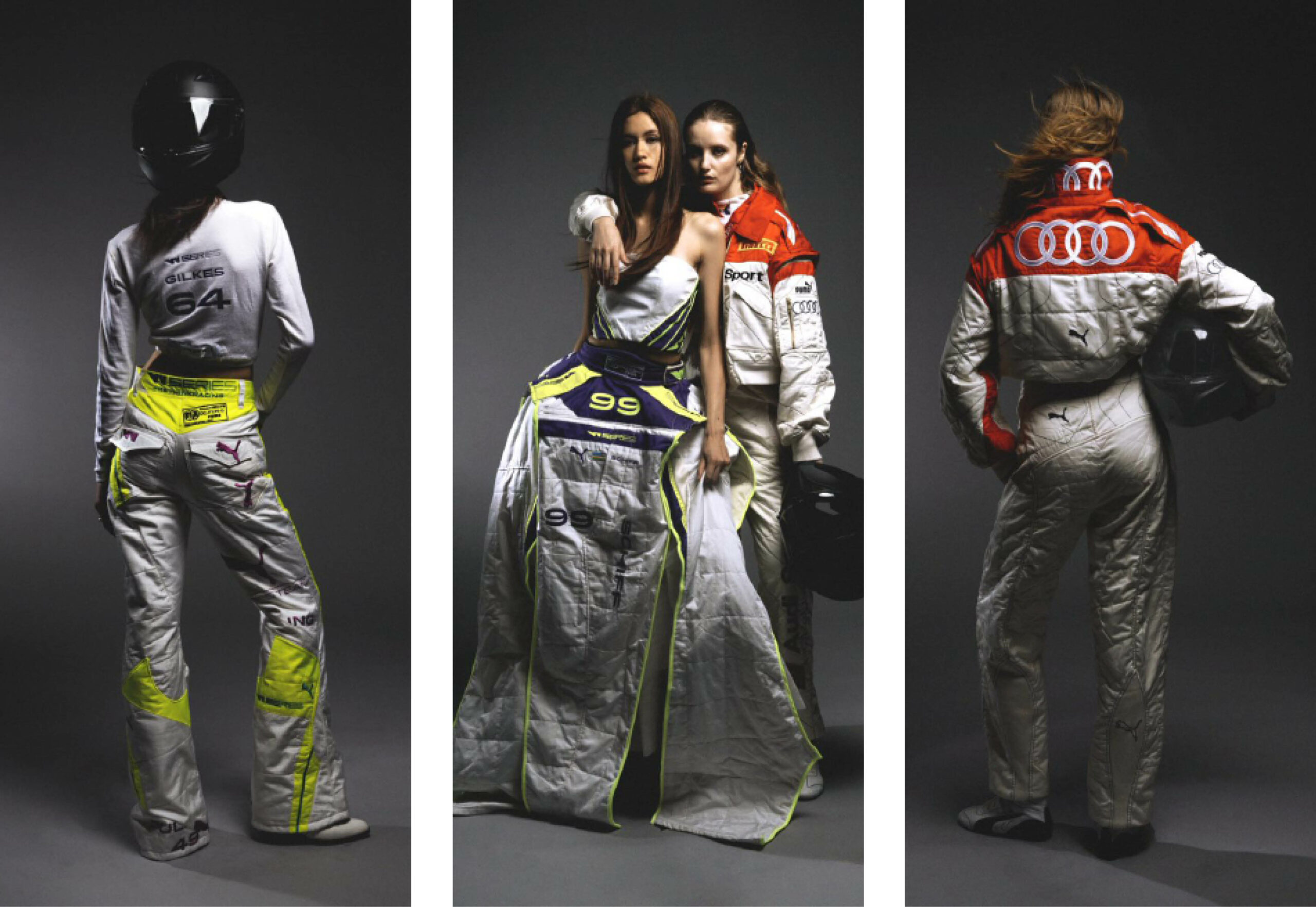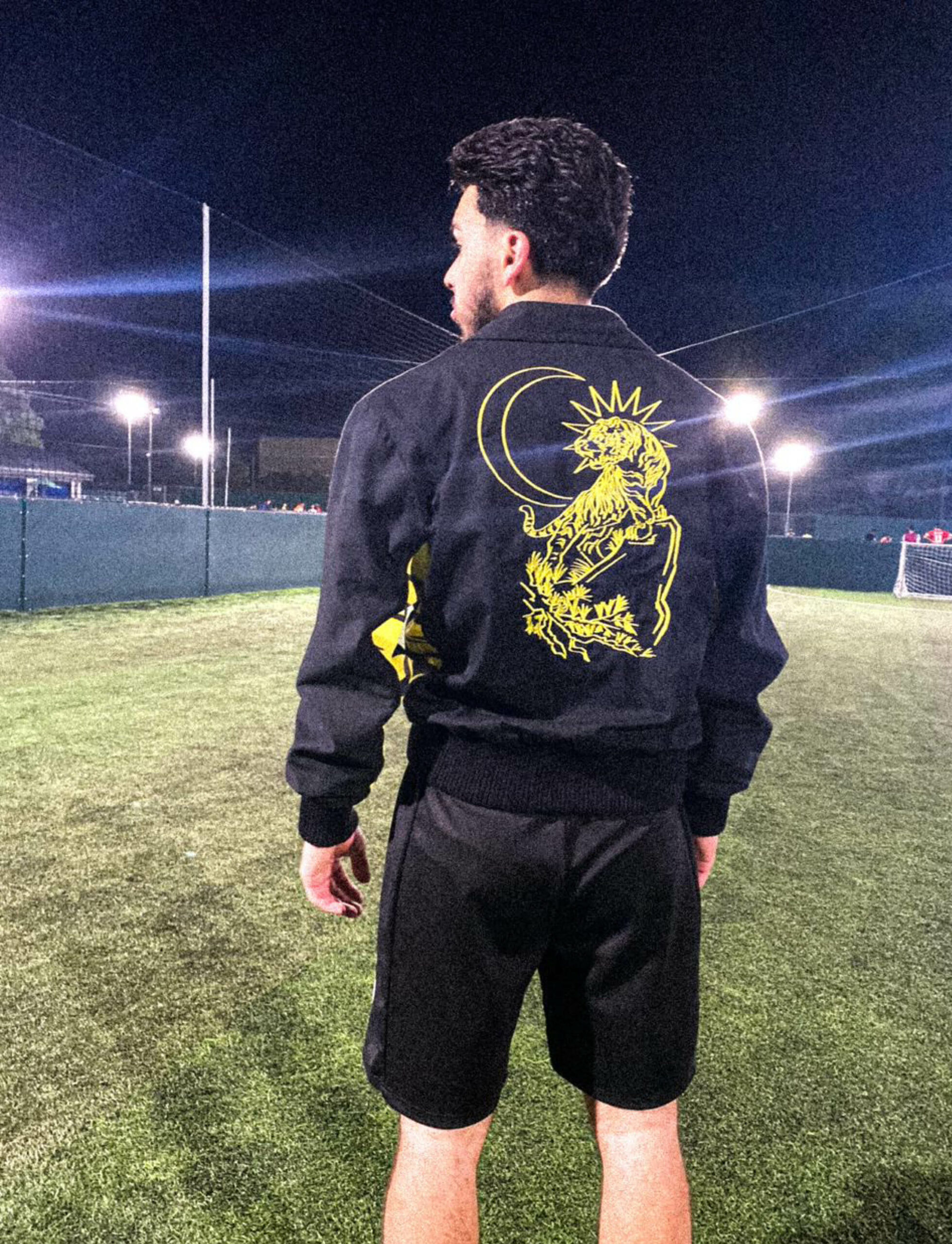
Youth: The Graduates
Ever looked at your sports gear and wondered how on earth it’s constructed? We sit down with two tutors from LCF’s Fashion Sportswear course and meet a group of 2023 graduates to discuss the future of sportswear design
By Penny Smith
In the bustling corridors of the London College of Fashion (LCF), there’s a course that’s causing quite a stir in the world of sportswear design. Glorious had the chance to sit down with Jess Williamson and Kiran Gobin, the talented tutors behind the Fashion Sportswear course, to dive deep into the ins and outs of designing for sportswear, the ever-evolving world of garment technology, and the exciting prospects that await their soon-to-graduate students.

Back in 2009, Fashion Sportswear started off as a small offering from LCF, but over the past 14 years, it has grown into a larger (but still relatively niche) programme from LFC. So what exactly is Fashion Sportswear and how does it differ from Fashion Design, you ask? Well, this course, nestled within the LCF product family, takes a technical and function-based approach to design. It’s all about solving problems and creating designs that cater to the user or athlete, with real-life scenarios as the foundation.
In the world of sportswear design, it’s not simply about looking good or following seasonal trends. Kiran compares it to an astronaut’s, “A space suit isn’t designed for aesthetics; it’s designed to keep you alive! It serves a purpose.” In sportswear, the primary focus is on fulfilling its purpose for the athlete or function.
“Every fabric choice, trim, construction technique, and silhouette must be considered,” says Jess, emphasising the significance of justifying design concepts and creating designs that are tailored to specific sports and the individuals who will wear them. She adds, “It’s about ensuring that every aspect of the design serves a purpose and contributes to its functionality.”
Jess also highlights how the big brands are always working five years ahead, and the development process never stops. Pieces have to be tested and put through wear tests in different environments. It’s all part of the exploration and design development phase. “Unlike fashion design, which often changes its looks every season, sportswear design is all about continuous development and improvement,” says Jess.
As the fashion and sportswear industries continue to evolve, the course keeps up by adapting its curriculum to meet changing trends and industry demands. Kiran and Jess constantly engage with industry professionals and stay updated on emerging technologies to ensure the course remains relevant and prepares students for the ever-evolving landscape. Second year students are set live industry briefs and there’s sometimes an option to do a year out in industry.
“Sportswear is all about what’s happening now and real-life scenarios in different sports. It’s crucial that our students can keep up and be relevant” says Jess. “This course prepares students for a wide range of career paths, including roles in design, product development, material sourcing, trend development, and more. These roles are often overlooked, but they are absolutely vital for the industry.” explains Kiran.

DEVELOPMENT

Once the graduates complete the course, they embark on diverse career journeys. “We encourage students to think ahead during their final year and some have developed really brilliant viable business plans” says Jess. Two soon-to-be graduates have identified gaps in the market, drawing inspiration from their own sporting backgrounds. For instance, ice skater Rosie Hatton’s final project revolves around creating a training kit specifically for synchronised ice skating, incorporating the movements and formations of skaters on ice. Similarly, student Stella Burbidge focuses on forward-thinking equestrian clothing for eventing. While at school Stella competed at a high level in equestrian disciplines. She loved textiles, but once she realised she couldn’t make a proper career out of riding, she looked for an alternative way to get into the sport. “The equestrian fashion lacks innovation and style, and since signing up to Sportswear at LCF, it has been my mission to change this,” says Stella, who dreams of opening her own UK equestrian brand in the future.

The course attracts a mix of students, including athletes who want to enhance their knowledge and creativity. So are the students generally sporty? “We’ve got sports people who are also incredibly creative. They bring their expertise and passion for their sports, along with a desire to explore the design aspect. It’s really exciting to have this blend of students who understand sports and those who are more fashion-oriented” Kiran explains. “We’re always learning,” exclaims Jess. “We never knew anything about synchronised ice skating until we met Rosie!,” laughs Kiran.


The class of 2023 and the future of sports design hold great promise. The students are eagerly preparing for their forthcoming graduate show at Protein Studios next week. The presentation will feature never-before-seen documentaries featuring their cutting-edge work. Many students are putting sustainability front and centre, as sustainability becomes second nature to them throughout the course.
Prima Jiraruangkiat’s project, “Project W,” in collaboration with Puma and the W Series Racing Team, came about after she gained hands-on industry experience with the sportswear brand and repurposed dead-stock race suits into a women’s wear range. “The aim of this collection is to celebrate women in motorsports, generating visibility and sparking conversation about women in motor-racing,” says Prima, who takes inspiration from designers such as Marine Serre who works with end-of-life products.

Meanwhile, Hannah Tribbeck combines fashion and sportswear while emphasising sustainability. Her collection transforms pre-existing unwanted and damaged sportswear garments into fashionable pieces. Hannah would like to see more focus from brands promoting longevity and sustainability as she believes there is still a lot more that can be done to educate consumers. When asked what she hopes to achieve upon graduating, Hannah says, “I don’t want to put pressure on myself as I feel I still need time to explore options to find my place in the fashion industry,” however, she does see herself working for a progressive fashion brand that is conscious of the impact we have on the planet and is trying to create qualitative fashion experiences without significant harm on our environment.
“Function takes centre stage in the course, though the function of something can also be visibility or cultural for some students,” explains Kiran. For example, Raul Jegatheesan, a self-confessed ‘football-mad’ designer, incorporates his passion for football into his designs. Raul’s collection is designed to evoke a sense of pride and unity through looking at the history of Malaysia’s football team through the 70’s and 80’s, which is widely regarded as the country’s ’golden era’.

challenges

Celia Cheung challenges traditional golf stereotypes with her apparel by incorporating unique design elements and materials that are both practical and stylish, drawing inspiration from Japanese 60s-70s youth culture, particularly Bōsōzoku and Sukeban. Her designs have a fresh and contemporary aesthetic that celebrates the rebellious spirit of these subcultures. Celia explains that consumers are increasingly seeking unique and diverse options in sportswear, looking for brands that align with their values, offer innovative designs, and cater to specific sports or niche markets. “There is a shift that presents an opportunity for smaller brands and labels to enter the market and carve out their own space,” she says.
Another student, Flo Harper, explores the concept of “practically impractical sportswear,” drawing inspiration from her background in freestyle dancing. She incorporates hyper aesthetics, dance, 2000s imagery, high fashion womenswear, and video games into her work, appealing to an active, femme market with a practical and playful ethos.

In addition to sustainability and inclusivity, students also delve into the world of technology within the course that can enhance performance and push boundaries. This includes exploring smart fabrics and advancements in garment construction techniques. “I think also we’re all just like a bunch of nerds as well. And we’re just totally fascinated by fabrics and the tiny details!,” Jess laughs.
Looking ahead, Kiran and Jess are thrilled about the potential impact their graduates will have on the industry. “Our students aren’t just designers; they are problem solvers and innovators,” says Jess. “They have the skills and mindset to create meaningful change within the sportswear industry.”
In conclusion, the Fashion Sportswear course at the London School of Fashion blends technical expertise, functional design, sustainability, inclusivity, and technological advancements to equip students for a dynamic and impactful career in the sportswear industry. With their creativity and problem-solving skills, graduates like Raul, Prima, Rosie, Stella, Hannah, Celia, and Flo are set to shape the future of sportswear design, pushing boundaries, and redefining what’s possible at the intersection of fashion and athletics. The future of Fashion Sportswear is looking bright!

Editorial Design by This is Root
Experience never-before-seen documentaries featuring the cutting-edge work of BA (Hons) Fashion Sportswear ranging from the functional to the fashion-focused. 1-2pm Friday 14th July, Protein Studios, Shoreditch. Open to all.




